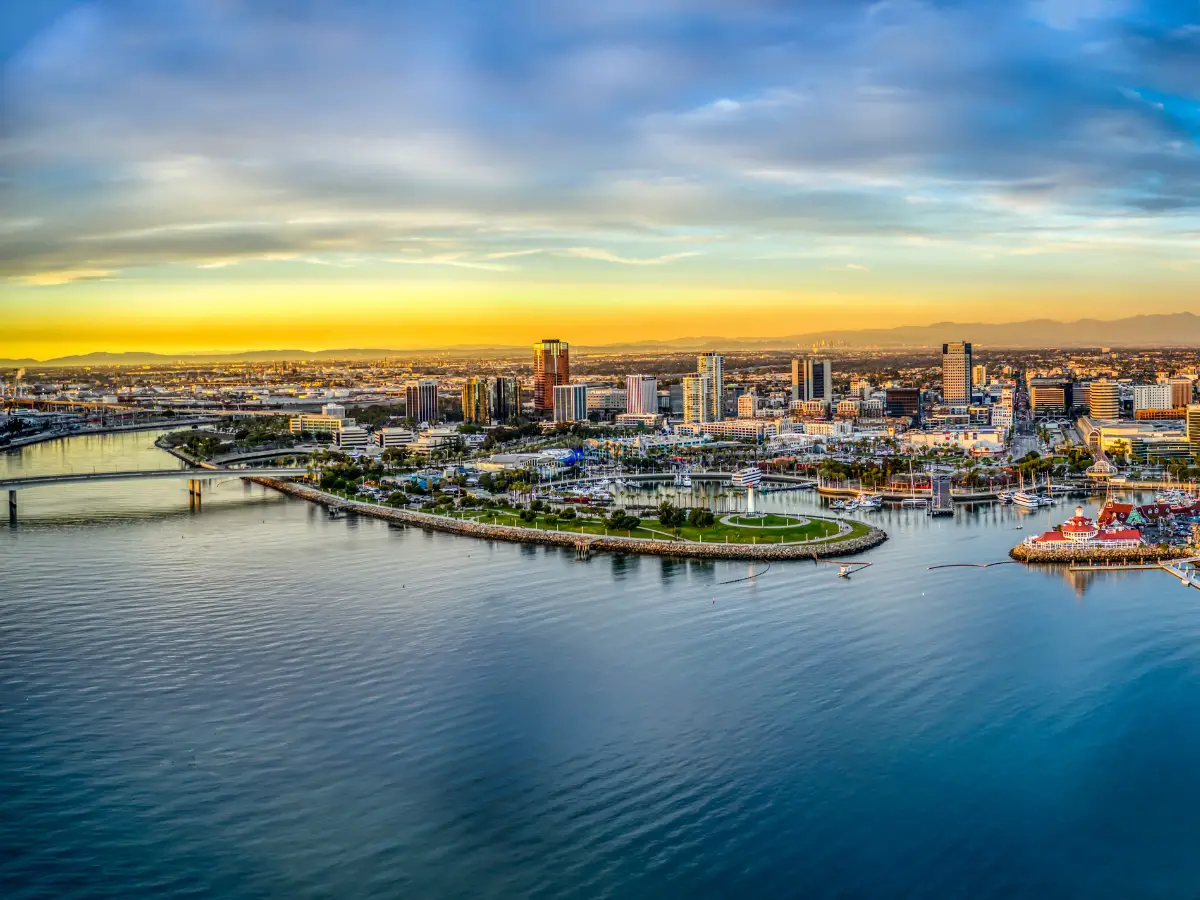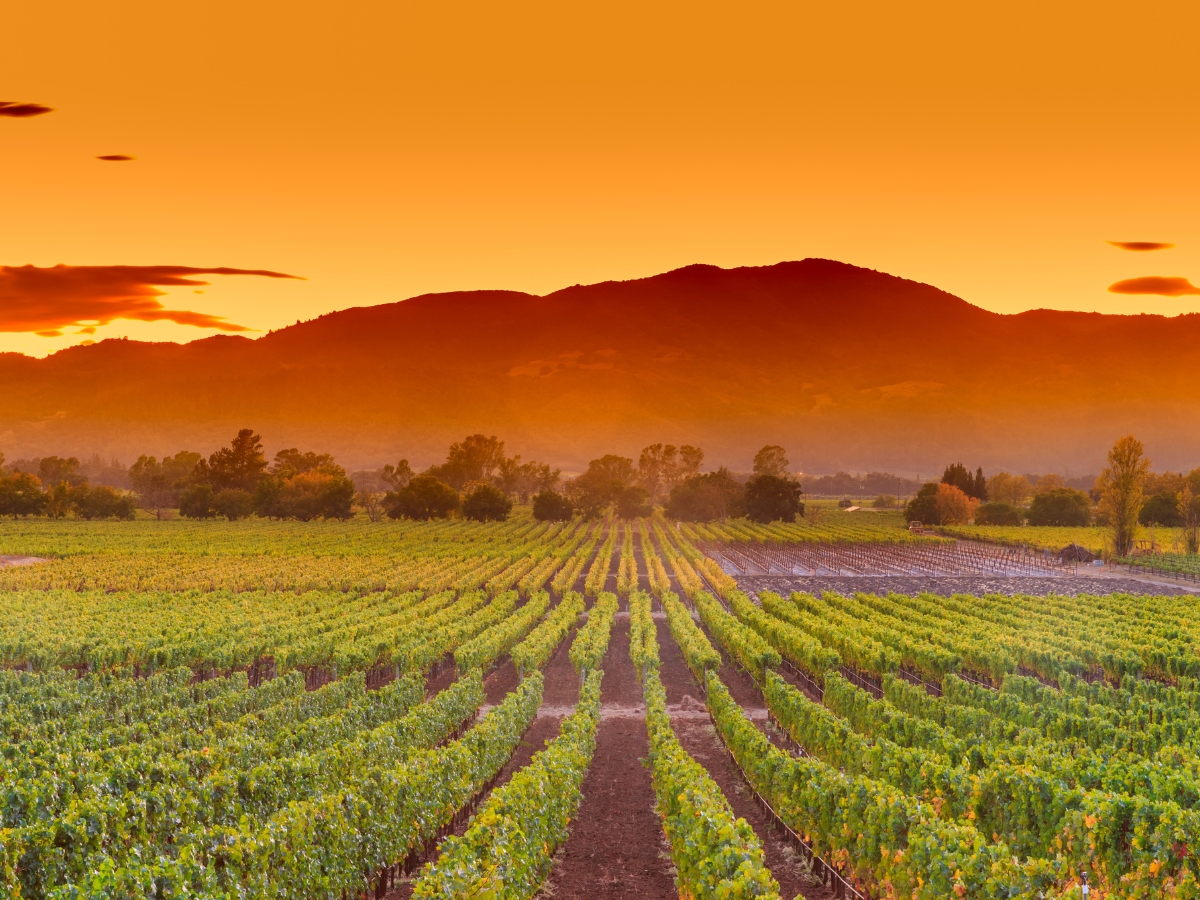When most people think of California, they imagine the scorching sun, endless miles of beach, and the Golden State’s great coastal vibes. California certainly doesn’t have a reputation for rain. In recent years, you’ve probably heard stories about drought, water shortages, and the general need for more rain in the region.
The hot and dry weather over the past few years has caused some people to wonder, does it rain in California? Although some of the more popular areas, like L.A. and San Diego, are mainly dry year-round, California gets its fair share of rain. The main issue is that it’s unevenly dispersed, leaving certain regions extremely dry.
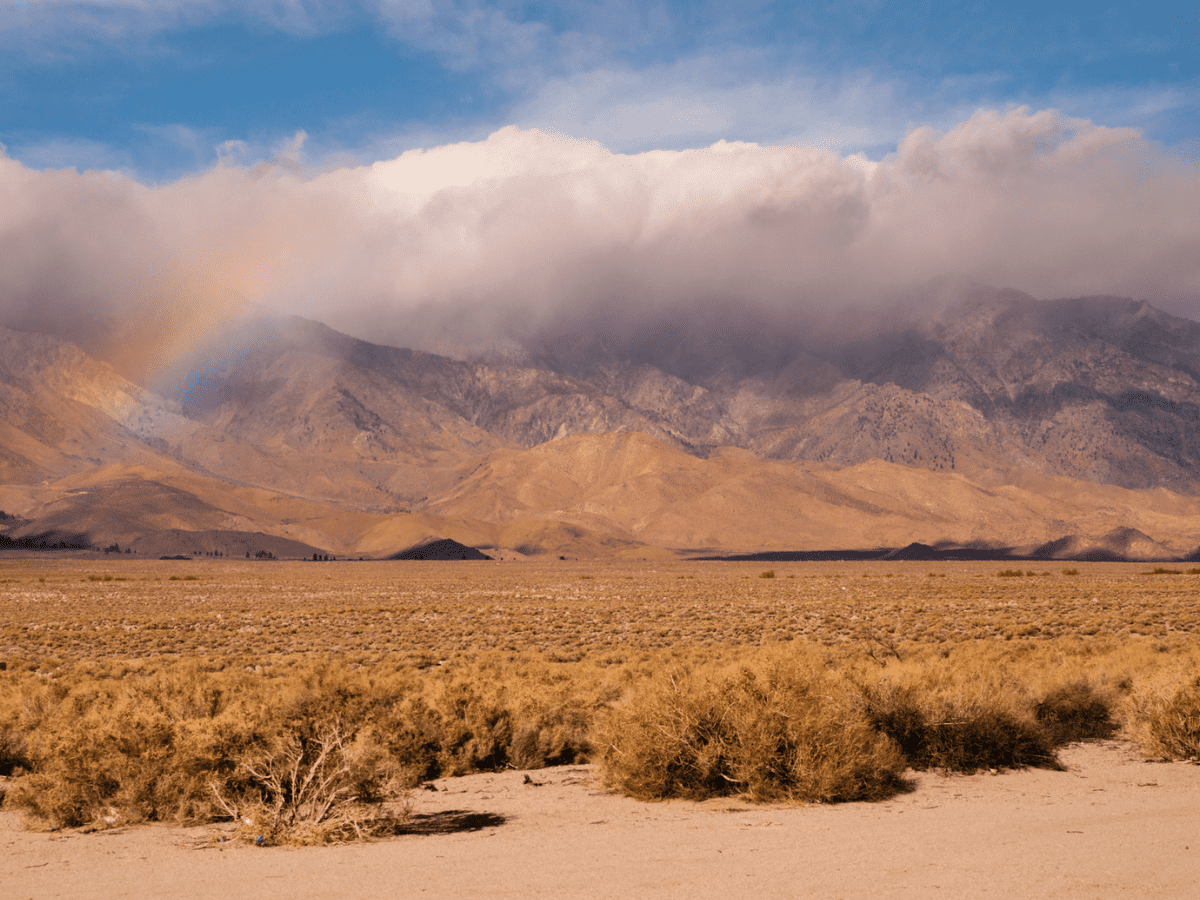
Where Does It Rain In California?
In short, it rains throughout the entire state of California. However, it’s far wetter in the northern section, especially near the coast. While the diverse landscape and sheer size of California mean the weather varies from place to place, there are two primary seasons: dry and wet seasons.
The wet season is shorter than the dry and lasts from November until February or March. However, in reality, the wet season often doesn’t exist in certain southern areas of California. Cities like L.A. actually have microclimates, meaning their weather doesn’t conform to that of the surrounding areas.
What’s more, there are large sections of California covered by desert that experience little to no rain for years at a time. Death Valley, near the border of California and Nevada, is the hottest and driest place in the U.S. and is frequently the hottest and driest place on the planet.
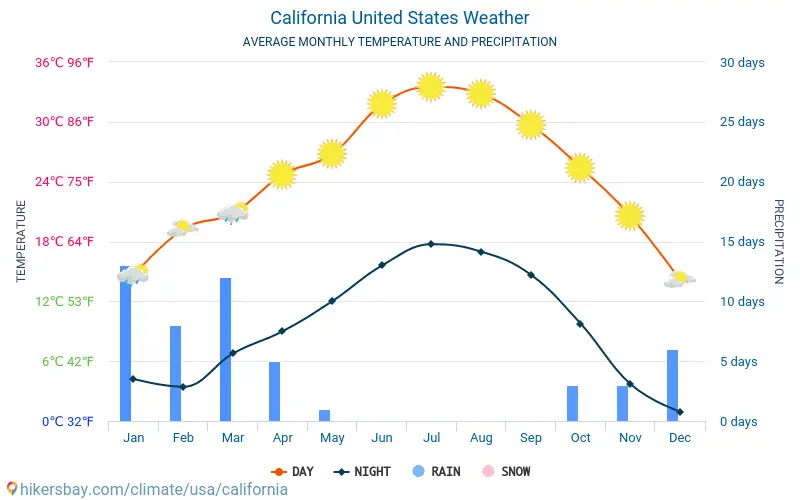
California’s Unique Climate
California has one of the most unique climates of any state in America. Depending on where you visit, you can experience sun-kissed beaches, hot and arid deserts, mountainous tundras, deep valleys, vast meadows, and luscious forests. It’s one of the few locations that marries sand, forest, and mountains within a relatively small area.
Generally speaking, California is said to have a Mediterranean climate, meaning it has hot, dry summers and mild winters. While this is true in a lot of Californian regions, it’s impossible to define the climate so loosely. The north and south of the state can be vastly different, especially when it comes to the rainy season.
Does It Rain In Northern California?
Due to the strong westerly winds traveling from the Pacific Ocean, the northwest of California typically gets a lot more rain than the south. The numerous mountain ranges also have an effect on the rain and general climate. The highest mountains tend to trap moisture-filled air as it moves in from the coast.
As a result, the air cools and precipitation occurs. Because of the considerable mountain ranges and the wind patterns, most of the rainiest parts of northern California are next to slopes that face west. There is usually between 15 inches and 50 inches of annual rainfall in northern California. However, the rain gets much heavier in certain areas, like Redwood National Park.
Moving toward the center of the state, you’ll find varied precipitation, depending on the location and type of landscape you encounter. The central valley is made up of mountains, foothills, forests, and deserts. Most of the rain falls in the northern sections of the valley where there is also commonly moisture-laden fog.

Does It Rain In Southern California?
The further south you travel, the drier it gets. Even in the Imperial and Coachella valleys, there is minimal rainfall, especially in summer. High-elevation deserts in the east of California, such as the Mojave, form part of the Great Basin, which has a dry continental climate.
Unfortunately, southern California often experiences drought. Water becomes extremely scarce during these periods. One of the region’s saving graces is the snowmelt that flows from the mountains. There are also several dams and aqueducts built around the state to efficiently transport water to where it’s needed.
The heaviest rain in southern California often comes as a result of a tropical storm or monsoon. From July to September each year, the Mexican Monsoon (southwest monsoon) picks up moisture from the Pacific, Gulf of California, and Gulf of Mexico, and drives it through the southern coast all the way to the northern mountains.
Average Yearly Precipitation In California
As we’ve already touched on, the diverse landscape and varied elevation levels in California mean that the climate isn’t consistent statewide. This is particularly evident when you look at the average yearly precipitation figures.
In the wettest northern regions, there can be over 170 inches of rain, while only traces of moisture are detected in the southern deserts. Coastal areas often experience the most consistent weather, especially in terms of temperature and precipitation. However, since 1980, annual precipitation in California has become more unpredictable.
Both very wet and very dry years have been more frequent. Despite this annual variance, California still experiences most (around 75%) of its rain between November and March. In recent years, winters have been very mild so much of the precipitation has been falling as rain rather than snow.
The lowest average yearly precipitation ever recorded in California was 9.4 inches in 1924. The highest average annual precipitation has in 2017 when it rained over 41.6 inches statewide. However, for the most part, the past decade has been extremely dry.
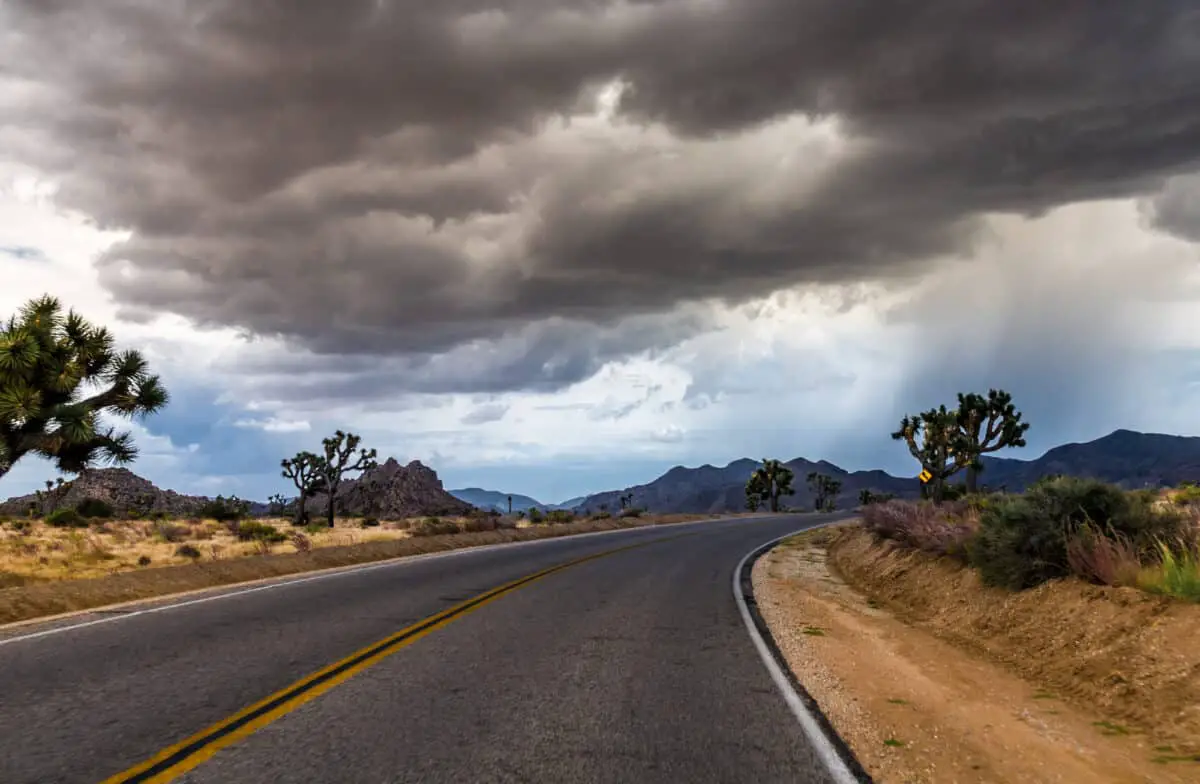
Why Doesn’t It Rain In California During Summer?
Far more frequently, Californians are crying out for rain. A lack of rainfall during summer and the beginning of fall can cause a lot of disruptions, whether through water shortages or a lack of irrigation. Moreover, continuous arid summers pose a major threat of wildfires, which have ravaged California for decades.
But why doesn’t it rain in California during summer? As discussed, California has a Mediterranean climate, of which one of the main characteristics is dry summers. Therefore, it’s normal for low levels of rainfall to occur.
However, a unique feature of California is that it combines its Mediterranean climate with a semi-permanent high-pressure ridge along the coast. This helps prevent any significant rainfall during summer, aside from sporadic tropical storms or unexpected weather events.
Southern California is also a low latitude zone so it naturally receives less precipitation. Northern California is far more mountainous and is a higher latitude zone, meaning it draws a lot more moisture. California’s location and unique topography make it one of the driest and sunniest places to be in the U.S. year-round.
| City | Avg Annual Precip | Avg Annual Snow | Avg. # days of Precip | Avg # thunderstorm days | Avg # hail days | Avg annual wind/highest record wind | # of tornadoes reported in county, 1960-2010 |
| Bakersfield | 6.49 | 0.0 | 37 | 2 | 0 | 6.4 / 49 mph | 12 |
| Bishop | 5.02 | 8.2 | 29 | 32 | 0 | 10.0 / 70 mph | 0 |
| Blue Canyon | 68.00 | 240.0 | 90 | 12 | 0 | 6.7 / 76 mph | 0 |
| Eureka | 38.10 | 0.2 | 117 | 4 | 1 | 6.8 / 56 mph | 0 |
| Fresno | 11.23 | 0.1 | 44 | 5 | 1 | 6.4 / 39 mph | 23 |
| Long Beach | 12.94 | 0.0 | 32 | 1 | 0 | 6.2 / 44 mph | 40 |
| Los Angeles | 13.15 | 0.0 | 35 | 1 | 0 | 7.5 / 62 mph | 40 |
| Mount Shasta | 39.16 | 104.9 | 93 | 13 | 0 | 5.1 / 24 mph | 0 |
| Redding | 33.52 | 4.2 | 75 | 11 | 1 | 6.6 / 64 mph | 1 |
| Sacramento | 17.93 | 0.0 | 58 | 2 | 1 | 7.8 / 74 mph | 10 |
| San Diego | 10.77 | 0.0 | 42 | 5 | 0 | 7.0 / 56 mph | 25 |
| San Francisco | 13.15 | 0.0 | 66 | 5 | 1 | 10.6 / 58 mph | 0 |
| Santa Barbara | 16.93 | 0.0 | 31 | 6 | 0 | 6.0 / 45 mph | 5 |
| Santa Maria | 14.01 | 0.0 | 45 | 2 | 0 | 6.9 / 46 mph | 5 |
| Stockton | 13.84 | 0.0 | 51 | 1 | 0 | 8.0 / 47 mph | 18 |


